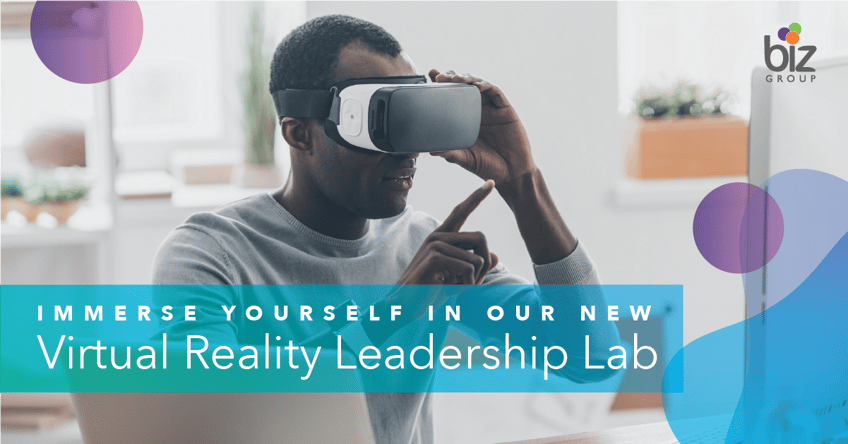We’ve looked at what virtual reality leadership training is and the benefits, so you might well be thinking “…that’s all well and good, but how do I introduce it into my organisations learning strategy?”
Well, there are a number of factors to consider, but I recommend you break it down into 3 steps:
1. Understand your options
2. Define your need
3. Get clear on your measures of success
Let’s look at each of those steps and break them down for you…
Step 1 – Understand your options
- Have you fully understood the different levels of technology and what’s possible? Not all VR experiences are made equal, for fully immersive experiences, you are going to need high end, powerful equipment. If you’re brave enough to take the leap and build your own corporate VR training setup, check out this article from Tech Radar on the various types of VR headsets available.
- Are you clear on the difference between augmented reality, virtual reality and mixed reality and which one is right for your particular business needs? Check out this article for more info.
- How will you ensure your VR training solution is sustainable and able to provide an ongoing return on your investment? If you engage a tech company to build a VR scenario for your current needs, how will you ensure this is updated and ready to evolve with updates in VR technology and the needs of your leadership team? It’s likely to be a big investment and key stakeholders are going to be watching closely to see you get this right, there’s a lot at stake when bringing VR into your organisation, so make sure you have a plan for sustainability.
Step 2 – Define your need
What is your organisations strategy and what are the expectations of your leaders in relation to successfully implementing this strategy? With any leadership program, it’s essential to understand how it fits into your overall business strategy.
What are the missing skills and competences you need to develop through your learning strategy? In order to set your leaders up for success, ensure you are crystal clear on what they are expected to do differently having completed a VR powered leadership experience.
What are the risks of not developing your leadership capability? The value derived from developing your leaders using VR must significantly outweigh the cost of investment, so you need to look at both the benefits of a more agile, and future ready leadership team, alongside the risks of continuing to operate with leaders who are underprepared and don’t have the right skills to tackle the challenges ahead of them.
What should your business leaders know before introducing VR training for leadership? If this is the first time you are using VR for this purpose, ensure you invite leaders to weigh in early and fully understand how it works, the benefits and what is expected of them. Talk about the objections mentioned above and don’t let them derail your plans.
Step 3 – Get clear on your measures of success
In simple terms, how will you know your VR powered leadership program has been a success? Consider what good looks like for your team;
1. Positive feedback scores?
2. A detailed case study on the impact of your leadership program?
3. An increase in overall knowledge of your leaders?
4. Specific examples of application of learning or proven ROI in the form of cost savings or increased revenue?
All of the above are absolutely possible when you work with the right learning solutions provider; and Biz Group helps clients achieve all of the above.
Once you have followed through on these steps, you’ll want to consider who is going to facilitate your VR learning experience. Do you have senior training consultants in your L&D team who are able to observe and then facilitate difficult conversations amongst leadership groups? Are these facilitators able to manage executive leaders who might be displaying negative behaviours in the very real VR scenario they have just been immersed in?
Extracting the learning in a respectful, but meaningful way whilst keeping groups of senior leaders on track with time is tough and you’ll need to ensure your VR experience facilitator has this skill, along with the relevant technical skills to ensure the experience runs smoothly.
If you’d like to get started with virtual reality leadership training for your company, you can follow these steps, or engage with a learning provider who already has all the technology and expertise to make it happen for you.

If you want to find out more about Biz Group VR leadership training, register your interest in our brand new Virtual Reality Leadership Lab opening on September 19th.






